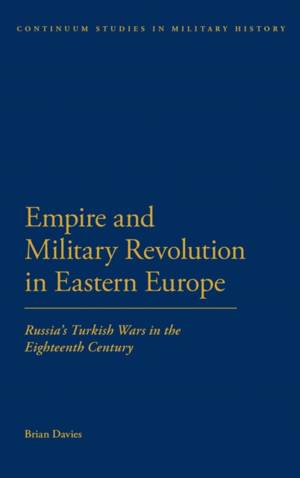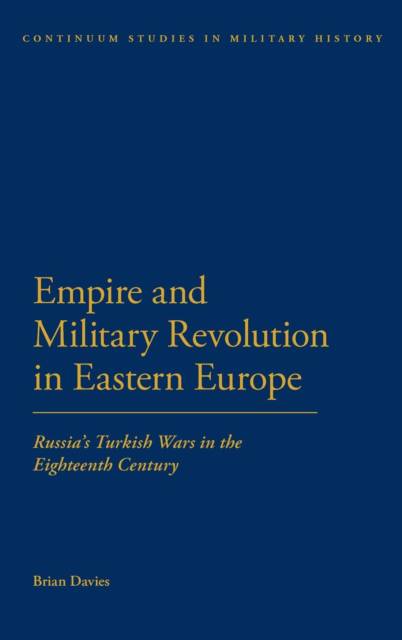
- Afhalen na 1 uur in een winkel met voorraad
- Gratis thuislevering in België vanaf € 30
- Ruim aanbod met 7 miljoen producten
- Afhalen na 1 uur in een winkel met voorraad
- Gratis thuislevering in België vanaf € 30
- Ruim aanbod met 7 miljoen producten
Zoeken
Empire and Military Revolution in Eastern Europe
Russiaa S Turkish Wars in the Eighteenth Century
Brian Davies
€ 322,45
+ 644 punten
Uitvoering
Omschrijving
" In terms of resource mobilization and devastation the wars between Russia, the Crimean Khanate and the Ottoman Empire were some of the largest of the eighteenth century, and had enormous consequences for the balance of power in Eastern Europe. Davies examines how these conflicts characterized the course of Russian military development in response to Ottoman and Crimean Tatar threats and to determine under what circumstances and in what ways Russian military power experienced a "revolution" awarding it clear preponderance over the Ottoman-Crimean system. A central part of this Davies' argument is that identifying and explaining a Military Revolution must involve examining the role of factors not purely military. One must look not only at new military technology, new force and command structure, new tactical thinking, and new recruitment and military finance practices but also consider the impact of larger demographic, economic, and sociopolitical changes."
Specificaties
Betrokkenen
- Auteur(s):
- Uitgeverij:
Inhoud
- Aantal bladzijden:
- 288
- Taal:
- Engels
- Reeks:
Eigenschappen
- Productcode (EAN):
- 9781441170040
- Verschijningsdatum:
- 18/08/2011
- Uitvoering:
- Hardcover
- Formaat:
- Genaaid
- Afmetingen:
- 156 mm x 234 mm
- Gewicht:
- 712 g

Alleen bij Standaard Boekhandel
+ 644 punten op je klantenkaart van Standaard Boekhandel
Beoordelingen
We publiceren alleen reviews die voldoen aan de voorwaarden voor reviews. Bekijk onze voorwaarden voor reviews.








